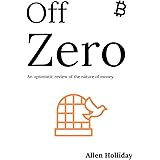Imagine discovering a bustling, global bazaar. Various digital assets are exchanged there. People trade without ceasing. This market mirrors a cryptocurrency exchange. Many find these platforms daunting. Yet, the accompanying video clarifies their essence. It demonstrates their role in digital asset trading. This article will further illuminate how a crypto exchange works. Its fundamental operations will be explored.
The Essential Role of a Cryptocurrency Exchange
A cryptocurrency exchange functions as a vital platform. It facilitates the buying and selling of digital assets. These assets include Bitcoin, Ethereum, and countless altcoins. It is often compared to a traditional stock exchange. Both match buyers with sellers. However, key differences exist. Stock markets operate during set business hours. In contrast, a cryptocurrency exchange runs continuously. Trading is available 24 hours a day. It is open every day of the week. This global accessibility defines its modern appeal.
Fundamentally, an exchange acts as an intermediary. It connects individuals seeking to buy crypto. It also links those wishing to sell it. Price discovery happens dynamically. It reflects real-time market demand and supply. Without these platforms, direct peer-to-peer trades would be difficult. They offer a structured, secure environment. A robust trading infrastructure is provided.
Establishing Your Digital Footprint: Funding and Wallets
Initiating a purchase on a cryptocurrency exchange requires a preliminary step. A user must first fund their account. This account is often termed a digital wallet. This wallet is securely held by the exchange itself. Funding methods are diverse. Local currency, known as fiat money, can be deposited. This typically involves bank transfers or credit/debit card payments. Alternatively, an existing cryptocurrency can be transferred. Users send crypto from an external personal wallet. This process enables active trading. Funds are made available for transactions.
The exchange wallet stores your digital assets. It also holds your fiat currency balances. This facilitates seamless trading activities. Security protocols are strictly enforced. Multi-factor authentication is commonly implemented. Users are advised to utilize these features. Strong, unique passwords must be created. This protects funds from unauthorized access. Your personal responsibility for account security is paramount.
Placing Your Intentions: Buy and Sell Orders
Once an account is funded, trading can commence. A buyer places a ‘buy’ order. This is a request to acquire a specific cryptocurrency. A desired price is usually specified. Conversely, a seller places a ‘sell’ order. This indicates an intention to offload crypto. Again, a preferred selling price is stated. These orders are not immediately executed. They await a matching counter-order. The exchange meticulously manages these requests.
Two primary order types are frequently utilized. A ‘limit order’ allows users to set a specific price. The trade will only execute at this price or better. This offers price control. A ‘market order’, however, executes immediately. It is filled at the best available current market price. Speed is prioritized over exact pricing with market orders. Strategic use of order types is key to trading success. Understanding these distinctions is crucial.
Deciphering the Order Book: A Market Snapshot
All buy and sell orders are compiled. They form a comprehensive list. This is known as the ‘order book’. This book provides a real-time snapshot. It shows market sentiment and liquidity. The order book is usually split. It displays ‘bids’ and ‘asks’. ‘Bids’ represent buy orders. These are prices traders are willing to pay. ‘Asks’ represent sell orders. These are prices sellers are looking for.
The order book is continuously updated. It reflects all active trading intentions. It shows the volume of cryptocurrency. This volume is available at various price points. The difference between the highest bid and lowest ask is the ‘spread’. A tight spread indicates high liquidity. This means trades can be executed quickly. Deep order books suggest market stability. They show significant interest at multiple price levels. The exchange acts as a sophisticated matchmaking service here. It brings willing buyers and sellers together efficiently.
Price Determination: The Laws of Supply and Demand
It is often misunderstood that exchanges dictate prices. This is not the case. Cryptocurrency prices are not set by the exchange itself. Instead, they are governed by fundamental economic principles. The universal laws of supply and demand are at play. When demand for a cryptocurrency is high, and supply is limited, its price tends to rise. Conversely, an abundance of supply coupled with low demand typically causes prices to fall.
This dynamic interplay ensures fair market pricing. Exchanges merely reflect these market forces. They provide the platform for price discovery. Consequently, slight price variations are observable. These variations occur across different exchanges. Factors like trading volume and regional demand contribute. Liquidity differences also play a role. Savvy traders may even exploit these discrepancies. This practice is known as arbitrage. It involves profiting from price differences on different platforms.
Exploring the Ecosystem: Types of Cryptocurrency Exchanges
The cryptocurrency landscape is diverse. It offers various exchange models. Each model serves different user preferences. Understanding these types is beneficial.
-
Centralized Exchanges (CEX)
These are the most common platforms. Luno, mentioned in the video, is an example. They operate with an intermediary. This entity facilitates trades. Funds are held in exchange-controlled wallets. Centralized exchanges offer user-friendly interfaces. They provide robust security measures. They also offer customer support. However, users must trust the exchange with their assets. A single point of failure potentially exists.
-
Decentralized Exchanges (DEX)
Decentralized exchanges function without an intermediary. Trades occur directly between users. This is facilitated by smart contracts on a blockchain. Users retain full control over their funds. Private keys are never surrendered. This enhances security and privacy. However, DEXs can be more complex to use. They may offer lower liquidity. Fewer features are often available.
-
Hybrid Exchanges
Some platforms aim to combine the best of both worlds. They are known as hybrid exchanges. They seek to offer decentralization’s security. They also aim for centralized exchanges’ speed. These are still an evolving concept. Their adoption is growing steadily.
Critical Considerations: Fees and Security Protocols
Engaging with a cryptocurrency exchange involves certain costs. Fees are typically charged for various services. Trading fees are most common. These can be ‘maker’ or ‘taker’ fees. ‘Makers’ add liquidity to the order book. They often pay lower fees. ‘Takers’ remove liquidity. They usually pay higher fees. Withdrawal fees may also apply. These cover the cost of transferring crypto off the platform. Deposit fees are less common but do exist for some fiat methods. A clear understanding of the fee structure is imperative.
Security is paramount when dealing with digital assets. Exchanges implement various measures. Cold storage of assets is widely used. This means storing cryptocurrencies offline. It protects them from online threats. Regular security audits are conducted. Insurance policies are sometimes held. Despite these efforts, user vigilance is vital. Strong passwords should be utilized. Two-factor authentication (2FA) must be enabled. Users are advised to research an exchange thoroughly. Its team, security history, and regulatory compliance should be investigated. Responsible trading practices safeguard your investments. The choice of a reputable exchange is a critical decision. It impacts the safety of your digital assets.







